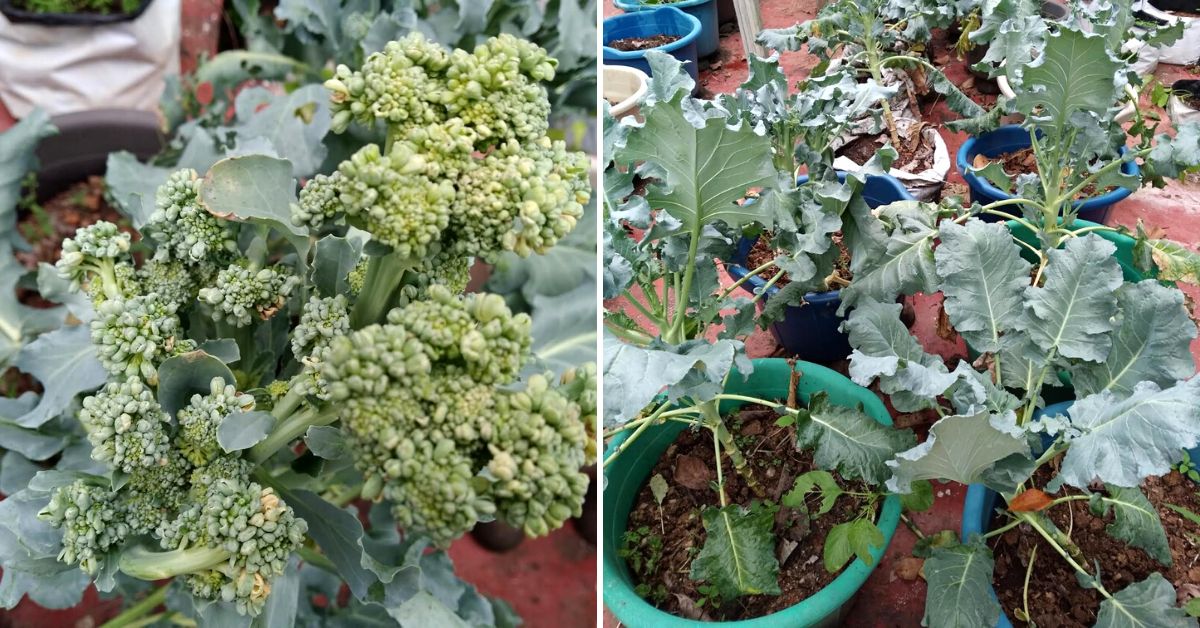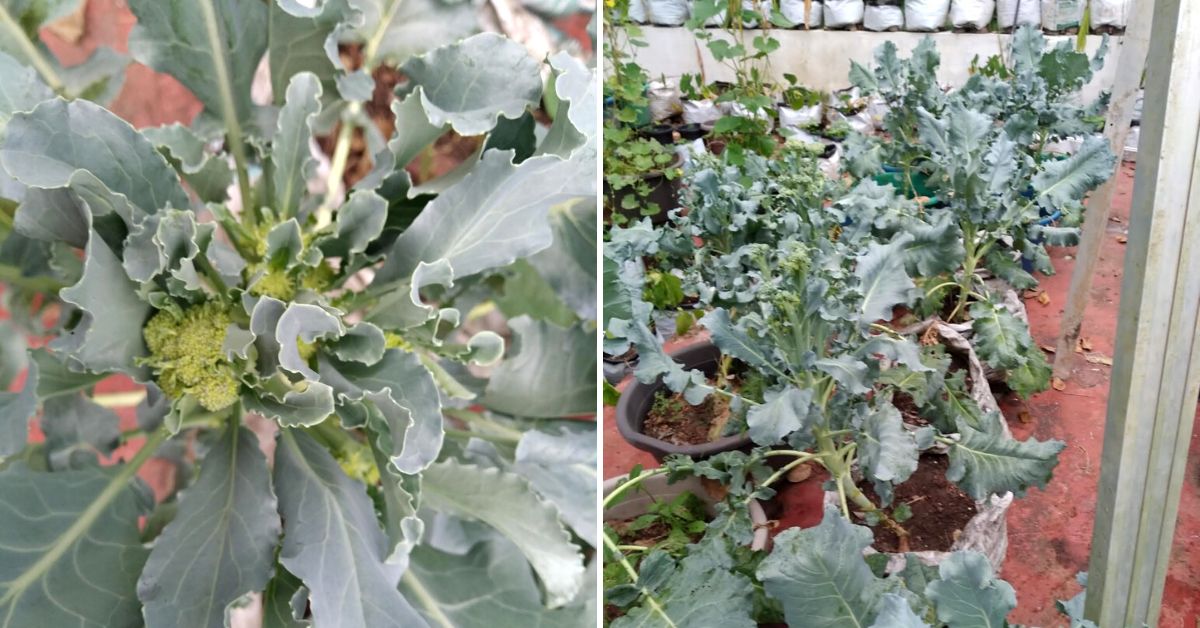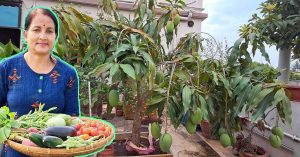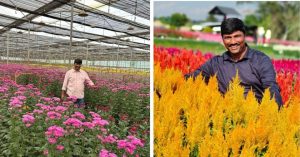How to Grow Organic Broccoli at Home: Gardener Shares 6 Easy Tips
Want to grow broccoli at home and don’t know how? Rema Devi, a Kerala resident who grows many organic vegetables in her terrace garden, shares easy tips of how you can do it yourself.

Broccoli is a highly nutritious vegetable loved by health food enthusiasts from across the world. A common ingredient in salads, it can be consumed either cooked or raw.
Broccolis are cruciferous vegetables belonging to the family of cabbage and cauliflower, and are rich in fiber. They are also a good source of several nutrients like Vitamin C and K, iron, and potassium.
This nutritional powerhouse of a vegetable is hence considered a superfood. But the world is still divided when it comes to its taste. There are many who love its slightly bitter flavour, whereas there are others who hate its unique taste.
Broccoli thrives well in cool climatic conditions and therefore grows well during winters.
Rema Devi, a terrace gardener from Changanassery in Kerala, says broccoli is easy to grow in any climatic conditions, and even in off-seasons. “With a little care and effort, broccoli can be nurtured anywhere. Though it is a cold-loving plant, it isn’t impossible to grow it in tropical climatic regions like Kerala. Just make sure that it is not exposed to too much heat or sunlight and receives enough water,” she tells The Better India.
Rema has been growing vegetables in her terrace garden for the past two decades. She also has a YouTube channel named Rema’s Terrace Garden, where she gives out tips and tricks on how to maintain a cost-efficient and sustainable organic terrace garden.
She shares a few tips on growing broccoli organically at home.
1. Sowing seeds or saplings
Broccoli can be propagated either through seeds or saplings. If you are using seeds, sow them in a seed tray or pot and let them germinate into a sapling. Sprouting seeds like this is an effective way to increase the germination rate as well as produce stronger seedlings. Make sure the soil is moist and not dry, as the seedlings won’t grow well if the soil is too dry or too wet. Keep a check on the moisture level and water if necessary.
Once the seeds germinate into healthy seedlings, they can be transplanted directly in the soil.
“Before transplanting the seedlings or saplings, you can dip the roots in pseudomonas liquid for about 30 minutes. This helps strengthen the roots, which are prone to decay,” says Rema.
2. Preparing a nutrient-rich potting mix
Mix the soil with lime and dry the soil mix for about a week. “The ratio must be 5 gm of lime for a single grow bag. After drying the soil mix under direct sun for a week, add some organic manure like cow dung powder or compost into it. You can also add some coco peat. Before planting the sapling or seedling, add a handful of neem cake and bone meal for each grow bag,” says Rema.

3. Filling the grow bag
An important step while growing seasonal vegetables like broccoli, cabbage, and cauliflower is filling up the grow bag according to the plant’s growth.
“Fill just 1/4th of the grow bag with the soil mix and plant the sapling/seedling in it. Later, when the plant grows, keep adding the soil to the grow bag. This helps accelerate the growth of the plant as well as in forming big broccoli (head),” she adds.
4. Requires only 50 per cent sunlight
Broccoli grows well in cold-climate. Therefore, it is suggested to keep the plant in a place where it receives up to 50 per cent of sunlight, as opposed to directly under the sun. “It also grows in temperate climate regions like Kerala. But we have to take extra care of the plant to ensure its growth and yielding,” says Rema, adding that she waters it twice a day to retain moisture in the soil.
5. Adding organic fertilisers
After planting the sapling, make sure that the soil doesn’t go dry, but also make sure to not overwater it. “You don’t have to add any fertilisers immediately after planting it. The soil is rich enough for it to establish growth. So let it be in the soil for at least two weeks. Later, bio-slurries and other organic inputs can be added to it to enrich its growth,” says Rema.
How to make a bio-slurry: Mix some cow dung with groundnut cake, neem cake and leaves of Gliricidia/neem — or any other green leaves — in a container and close it. Keep the mix for about 10 days. Then open it to add 100 gm of lime and mix it well. Keep the mixture for five more days.
“Take one cup of this organic mixture and dissolve it in 10 times of water. This bio-slurry can be applied to the plant once in a while for better growth. Besides, one can ferment groundnut cake and apply it to the plant twice a week,” she adds.
6. Combating pests
Broccoli is prone to pests, so it is essential to make organic pesticides to prevent this.
Take 100 gm of neem cake and mix it in about 3-4 litres of water. Grind 2-3 bulbs of garlic and add it to the mix. Keep it overnight (at least 12 hours). Then strain the mix and spray it onto the plants. If you found our stories insightful, informative, or even just enjoyable, we invite you to consider making a voluntary payment to support the work we do at The Better India. Your contribution helps us continue producing quality content that educates, inspires, and drives positive change. Choose one of the payment options below for your contribution- By paying for the stories you value, you directly contribute to sustaining our efforts focused on making a difference in the world. Together, let’s ensure that impactful stories continue to be told and shared, enriching lives and communities alike. Thank you for your support. Here are some frequently asked questions you might find helpful to know why you are contributing?

“If the plant grows healthy, then the vegetable will be ready to be harvested after 60 days from planting. Also, not just the broccoli head, even its leaves are edible and nutritious,” adds Rema.
Edited by Divya Sethu; Photo credits: Rema Devi
This story made me
-
97
-
121
-
89
-
167













